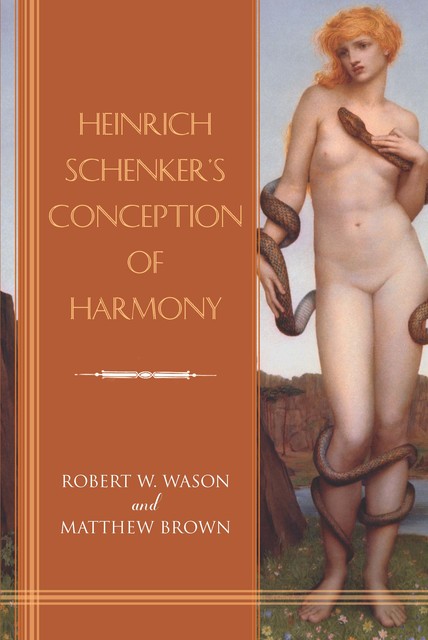We use cookies to improve the Bookmate website experience and our recommendations.
To learn more, please read our Cookie Policy.
To learn more, please read our Cookie Policy.
Accept All Cookies
Cookie Settings
Something went wrong. Try again.

Read in our apps:
iOS
·Android
Matthew Brown,Robert W. Wason
Heinrich Schenker's Conception of Harmony
Notify me when the book’s added
Impression
Add to shelf
Already read
Report an error in the book
Share
Facebook
Twitter
Copy link
To read this book, upload an EPUB or FB2 file to Bookmate. How do I upload a book?
What makes the compositions of Handel, Bach, Haydn, Mozart, Beethoven, Schubert, Schumann, Chopin, and Brahms stand out as great works of art? Heinrich Schenker (1868–1935) set out to answer this question in a series of treatises, beginning with a strikingly original work with the deceptive title Harmonielehre (roughly: Treatise on Harmony, 1906).
Whereas other treatises of the period associated harmony with the abstract principles governing chords and chord progressions, Schenker's treated it as the conceptual glue that allowed the individual elements of a work (melodies, motives, chords, counterpoint, etc.) to work together locally and globally. Yet this book,though renowned and much cited, has never been studied systematically and in close detail.
Heinrich Schenker's Conception of Harmony approaches Schenker's 1906 treatise as a synthesis of ancient ideas and very new ones. It translates, for the first time, two preparatory essays for Harmonielehre and describes his later views of harmony and the ways in which they influenced and also were ignored by the 1954 edition and translation, entitled simply Harmony. Though problematic, Harmony was the first published translation of a major work by Schenker, inaugurating the study of his writings in postwar America and Britain, where they continue to be highly influential.
Robert W. Wason is Professor Emeritus of Music Theory and Affiliate Faculty in Jazz and Contemporary Media at the Eastman School of Music.
Matthew Brown is Professor of Music Theory at the Eastman School of Music.
Whereas other treatises of the period associated harmony with the abstract principles governing chords and chord progressions, Schenker's treated it as the conceptual glue that allowed the individual elements of a work (melodies, motives, chords, counterpoint, etc.) to work together locally and globally. Yet this book,though renowned and much cited, has never been studied systematically and in close detail.
Heinrich Schenker's Conception of Harmony approaches Schenker's 1906 treatise as a synthesis of ancient ideas and very new ones. It translates, for the first time, two preparatory essays for Harmonielehre and describes his later views of harmony and the ways in which they influenced and also were ignored by the 1954 edition and translation, entitled simply Harmony. Though problematic, Harmony was the first published translation of a major work by Schenker, inaugurating the study of his writings in postwar America and Britain, where they continue to be highly influential.
Robert W. Wason is Professor Emeritus of Music Theory and Affiliate Faculty in Jazz and Contemporary Media at the Eastman School of Music.
Matthew Brown is Professor of Music Theory at the Eastman School of Music.
more
This book is currently unavailable
843 printed pages
- Original publication
- 2020
- Publication year
- 2020
Have you already read it? How did you like it?
👍👎
fb2epub
Drag & drop your files
(not more than 5 at once)

